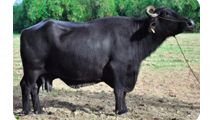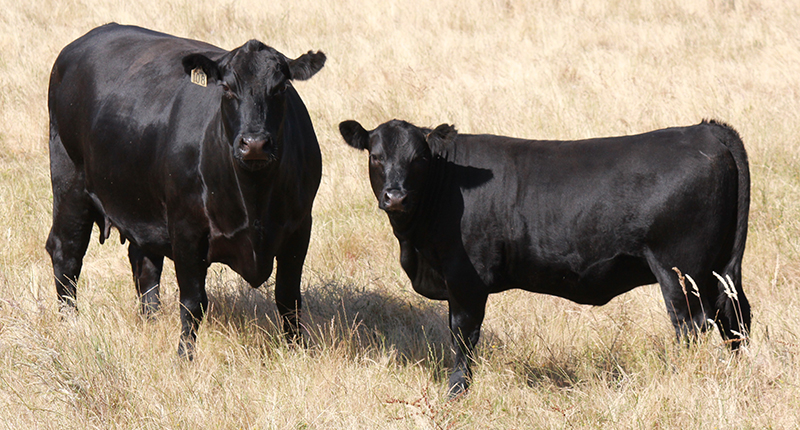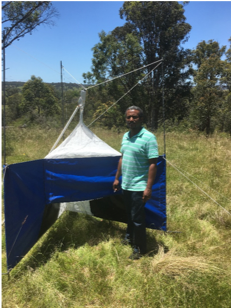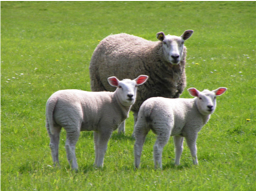2018 Seminar Series
Tuesday 27th March 2018. Gut health is important to the health and productivity of agricultural animals. The microbial populations that inhabit the gastrointestinal tract (GIT) play a major role in the establishment and maintenance of a healthy gut and immune system. Gut microbiota helps digest food, produce health promoting metabolites, regulates and primes the immune system, controls fat storage and obesity, produces hormones and regulates some brain functions. Outnumbering host cells 10 fold, intestinal bacteria represent an important organ which has a beneficial influence on host health. In addition to a number of benefits it provides to the host, intestinal microbiota is also a majorsource of pathogens. Intestinal microbial communities in chickens assume a near-stable state within the week which leaves a very small window for permanent microbiota remodelling. It is the first colonisers that determine the fate of microbial community in humans and birds alike, and after the microbiota has matured there are very small odds for permanent modification as stable community resists change. This presentation will cover outcomes from the microbiota manipulation experiments aiming to permanently modify intestinal microbiota at hatch or during the first week for perpetual health benefits. The use of in-feed antibiotic growth which the host-microbiota promoters (AGPs) is one way in interaction has been manipulated. AGPs have been used to control pathogens and improve productivity. A rapid increase in the volume of free range and organic agricultural products is also driving the need in the Australian industry for efficient natural alternatives to the use of antibiotics. This has critical implications for issues of national concern such as food security, the economy, bio-security, health and wellbeing of the population who consume agricultural animals. We will also present the data on microbiota manipulation using natural AGP alternatives. Associate Professor Dragana Stanley from Central Queensland University is an ARC fellow in poultry research. Dr Stanley is one of Australia’s highest contributors to the field of poultry intestinal microbiota, however she is also well known in human microbiota and immunological research. Based on Scopus and SciVal benchmarking feature, 58.8% of all of her manuscripts are in world’s top 10% best journals and 57.1% of her manuscripts belong to top 10% most cited publications in the world. Dr Stanley is author of 4 Nature publications and first author on Nature Medicine manuscript investigating role of bacterial translocation in post stoke pneumonia. PhD Student, University of New England Tuesday 3rd April 2018. Selection of dairy buffalo (Bubalus bubalis) bulls in the Philippines so far is based on the milk performance of their daughters (progeny testing). However, this takes seven years before the identification of the “best” bulls. With the availability of a medium density DNA chip for buffalo, it is now possible to genotype 90,000 markers (single nucleotide polymorphism: SNPs) per animal. Based on these SNP markers, it is now possible to predict the breeding value of a bull even without production data, thus reducing the generation interval and hastening genetic progress. It is also possible to identify chromosome regions very close to these markers that contain genes with large effects related to desired traits. To do this, a genome-wide association study (GWAS) is conducted, wherein animals with performance data (milk traits: milk yield, fat yield and protein yield) are genotyped and significant SNP markers associated with the above traits are identified. To know more about this topic, you are all invited to attend the ASS this coming April 3 and here Rommel will talk about “Genome-wide association study for milk traits in buffaloes”. Rommel is a PhD student from the Philippines working on ”the use of genomic data in a dairy buffalo breeding program”. His principal supervisor is Professor Julius van der Werf. Tuesday 10th April 2018. The feed cost accounts for most of the production costs. The costs of ingredients supplying energy for the animal contribute the largest portion of total diet costs. The knowledge about the diets ingredients contents is a necessity for the nutritionist to formulate diets meeting the animal’s requirements and optimizing their optimizing their production. Different feeds’ energy evaluating system is available for mono gastric animals, pigs, and poultry, in terms of digestible energy (DE), apparent metabolisable energy (AME), and net energy (NE). The NE considers that part of energy wastes dissipating as heat through the digestion and metabolism. So, hypothetically, formulating the diets according to the real available amount of energy, NE, is better than the current feed formulating system, AME. In our experiment at UNE with big numbers of layers, we formulated diets on different feeds’ energy evaluating system to see whether is any beneficial effects on the birds’ performance, egg quality parameters, and economics. The results are promising and I am looking forward to seeing you on my seminar day! PhD student, University of New England Tuesday 17th April 2018. Broiler chickens (Gallus gallus domesticus), commonly referred to as broilers, are meat-type chickens raised for marketing at a young age, usually 5 to 7 weeks. Since their domestication in Southeast Asia around 7 to 10,000 years ago, they have been developed into the most efficient terrestrial production animals. They are twice as efficient as swine and four times more efficient than cattle in converting nutrients present in the feed into muscle/body weight. In spite of innately exhibiting an intermittent feeding behavior, broiler chickens have been reared in commercial operations throughout the past decades on either continuous or near continuous illumination (23 hours of light and 1 hour or dark) or with daily, human-like schedules (16 to 18 hours of light and 6 to 8 hours of dark) and fed ad libitum, and continue being so in most operations, in the certainty that this practice maximizes feed intake and growth rate. With further progress in terms of performance being sought, and following decades of research focusing on distal GIT segments, it is about time to explore the impact foregut manipulation can have on growth and health of broiler chickens. Sniffing Out Insect Invaders – A Novel Approach To Upskill Biosecurity Dogs - Ariella MoserTuesday 8th May In Australia, biosecurity sniffer dogs are employed at our borders to search for biological hazards that risk introducing exotic species or diseases. Although biosecurity dogs screen for an impressive number of plant and organic materials, they have never before been trained to detect live insects. Training dogs to find exotic insects could enable us to locate hidden pests in cargo and potentially prevent incursions. However, training dogs using live insects is problematic, since importing exotic invasive bugs is prohibited by quarantine regulations. In collaboration with the Department of Agriculture and Water Resources, we are exploring alternative approaches to train dogs without the use of live insects. So far, we have found promising results using solvent scent extract and frozen dead insects, which have successfully translated to dogs finding live insects with a high degree of accuracy within just a few days. In the future, it’s hoped that these techniques may be used to train biosecurity dogs to search for exotic insects at our border. Feeding Strategies To Enhance Foregut Development In Broilers - Ines Rodrigues Broiler chickens (Gallus gallusdomesticus), commonly referred to as broilers, are meat-type chickens raised for marketing at a young age, usually 5 to 7 weeks. Since their domestication in Southeast Asia around 7 to 10,000 years ago, they have been developed into the most efficient terrestrial production animals. They are twice as efficient as swine and four times more efficient than cattle in converting nutrients present in the feed into muscle/body weight. In spite of innately exhibiting an intermittent feeding behavior, broiler chickens have been reared in commercial operations throughout the past decades on either continuous or near continuous illumination (23 hours of light and 1 hour or dark) or with daily, human-like schedules (16 to 18 hours of light and 6 to 8 hours of dark) and fed ad libitum, and continue being so in most operations, in the certainty that this practice maximizes feed intake and growth rate. With further progress in terms of performance being sought, and following decades of research focusing on distal GIT segments, it is about time to explore the impact foregut manipulation can have on growth and health of broiler chickens. Comparison Of Genetic Models To Analyse Feed Efficiency - Antonio Torres-Vazques Providing feed to animals is a major input cost in almost any animal production system. The efficiency of converting this feed into useable animal products, commonly referred to as feed efficiency, has become a common objective in many beef cattle breeding programs. The interest in feed efficiency has increased over the last decades. Not only because is important to increase food production due to the growing human population, but also because feed efficiency is related with the feed cost of production. Residual feed intake is increasing in popularity as a measure of feed efficiency in beef cattle. The genetic analysis of traits directly related to estimate residual feed intake (e.g. live weight and daily feed intake) must be done with greatest possible accuracy. In this context, we compare different genetic models to analyse live weight and daily feed intake, and we study how the genetic relationship between these traits change over time. Antonio Torres-Vazquez is a veterinarian in his second year of his PhD. His research interest ranges from estimation of genetic parameters to optimisation of breeding programs. Antonio has completed a Master in Science with specialization in Animal Breeding and Genetics and currently is investigating the genetic variability of feed efficiency traits in Australian Angus Cattle. Tuesday 5th June Oriental Theileriosis is a tick borne disease of cattle and buffaloes caused by the protozoan parasite, Theileria which affects the red blood cells. The disease is usually found in tropical and subtropical regions where suitable tick vectors occur. Out of the different genotypes, Ikeda and Chitose are consistently found to be associated with severe disease. Research and investigation of cases involving infection with T. orientalis in Australia has been ongoing. Despite various studies in the genotype identification of the parasite, information on the seasonal abundance of vectors is scarce. In addition to bush ticks (Haemaphysalislongicornis), the involvement of other reported tick species, biting flies and lice in the transmission of the parasite needs to be investigated. Moreover, since the Northern Tableland is less preferable for ticks as compared to coastal regions because of long severe winter, the full appreciation of vectors in the transmission of the parasite needs to be addressed for proper control. Therefore, our project is undertaken to better understand the potential vectors along with the genotype profile and their seasonal abundance in the study areas of the Northern Tablelands of NSW using qPCR. Furthermore, the study will look into the salivary glands of ticks to determine their infection status with the parasite. Virtual Fencing And Sheep Welfare Virtual fencing systems are an exciting new farm management tool, with potential to reduce costs associated with traditional fencing, and offer more flexibility for producers to manage their grazing and land use. But how do the animals feel about this new tech? This research will investigate the potential welfare implications of virtual fencing, and the role that the various learning strategies of sheep may play in ensuring that virtual fencing systems can be implemented in an ethical and sustainable way. Does Meat And Bone Meal, Phytase And Antibiotics Affect Gut Dysfunction, Blood Indices And Bone Integrity In Broiler Chickens During Necrotic Enteritis Challenge? Meat and bone meal (MBM) is an economical source of protein, calcium and phosphorus in broiler diets. However, the high level of indigestible protein in MBM potentially acts to predispose growing chickens to necrotic enteritis (NE). Undigested protein is deaminated in the hindgut and releases ammonia that increases pH favouring growth of pathogenic C. perfringens. Phytase enzyme used at normal (500 FTU per kg diet) or super-dose (1500 FTU/kg) have been used over the years to release nutrients especially Ca and P in poultry diets. Therefore, a diet formulation that seeks to replace MBM with phytase is worth-investigating. Since most Australian meat chicken diets contain both MBM and antibiotics, it is not far-fetched to think that the use of phytase without MBM might reduce or eliminate the need for antibiotics. It was on this premise that a study was designed to investigate the effect of superdosing phytase with or without dietary MBM and with or without antibiotics on performance during necrotic enteritis. This seminar will give a snippet of the whole study and highlight the physiological effects of MBM-free or MBM- based diets on the integrity of the gut, bone and blood parameters of chickens during necrotic enteritis and whether or not phytase enzymes or antibiotics played a major role in ameliorating these effects.Biography
Biography


Tuesday 8th May 
Tuesday 29th May

Tuesday 5th June
Tuesday 10th July


